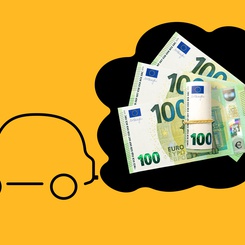With ESSEC Knowledge Editor-in-chief
How can organizations do good (help the environment) while doing well (boosting economic growth)? While both worthy goals, they can be at odds with each other, creating a dilemma for organizations who wish to both contribute to environmental sustainability while maintaining economic growth.
Yan Li (ESSEC Business School), Xue Yang (Nanjing University) and Lele Kang (Nanjing University) looked at case studies of eight organizations in China and Singapore and identified three types of strategic drivers that influence the green IT decisions that organizations make. They also found that the two goals become aligned when considering short-term investment and long-term benefit, designing an appropriate strategy, and reacting in response to external pressure. This information can help organizations plan their sustainability initiatives more effectively.
All that glitters is not green
Information technology (IT) is a major driver of economic and social development, but such advancement comes at a high environmental cost. Organizations’ reliance on IT has led to increased computing power and the development of large data centers that provide analytics and cloud computing services. These result in increased energy consumption, higher carbon emissions, and more electronic waste. This has led to the development of green IT initiatives to address the environmental consequences, meaning IT products and services that reduce the negative impact and improve sustainability. The existing research supports the idea that launching green IT efforts can improve sustainability outcomes, for example by managing energy consumption. Other examples of green IT initiatives include powering data centers with renewable energy sources, reducing waste from out-of-date computing equipment, and encouraging telecommuting/remote administration for reduced transportation-related emissions. There are a number of ways to go about a green IT initiative, but they all require a concerted effort from staff and involving IT processes and IT products.
This is likely to be a significant technological trend with wide-reaching social implications. However, all that glitters is not green, and implementing green IT measures comes with complications such as disruption to existing systems, unpredictable returns and market demand, cost, and how stakeholders will react. This leads to the dilemma between doing good while doing well: while companies may wish to do good by implementing green IT initiatives, they may have legitimate concerns about how this will affect their bottom line (doing well). Indeed, much of the research has focused on the sustainability implications and less on the economic ones.
This dilemma led the researchers to examine the drivers that impact an organization’s motivation to adopt green IT initiatives and their link to this reconciliation between sustainability and profit.
What drives this process?
To explore this question, the researchers conducted a qualitative study on eight organizations in China and Singapore, as it is crucial to explore how green IT implementation plays out in the real world as opposed to an experimental setting. The companies operated in telecommunications and IT-related industries. All eight were large companies with over 3000 employees, and all eight were pioneers of green technology. The research team used a multi-prong data collection approach, conducting interviews and clarifying information via emails and phone calls, field observations, and archival data.
They looked at both internal and external drivers, separating them into three categories: competitiveness, legitimation, and ecological responsibility. Internal drivers, or organizational drivers, include factors like stakeholders’ attitudes, economic considerations, and technology skills. External drivers include factors like policy and industry pressures, like regulations on waste disposal and energy consumption. Breaking it down further, competitiveness is the link between ecological actions and long-term profitability; legitimation is the organization’s drive to align its actions within a certain set of norms or regulations; and ecological responsibility refers to an organization’s thoughts about its duty to society and its values.
Looking at the results, the researchers found that green IT practices were seen as essential strategic considerations for these companies. They also found that organizations did not always manage to reconcile the gap between sustainability and profit through meeting the objectives of competitiveness, legitimation, and ecological responsibility. For companies that noted a significant amount of government pressure, an external driver, only a middling level of reconciliation was achieved. Organizations tended to have one main driver, like government pressure for Chinese companies and corporate social responsibility for the Singaporean companies, but were also motivated by the other drivers. Overall, the organizations tended to be most motivated by cost reduction, market drivers, government pressure, and corporate social responsibility.
For reconciliation of sustainability and profit, the researchers found that the time frame matters: while IT initiatives tend to require a short-term investment, they will bring long-term benefits that surpass the initial investment. The strategy deployed also plays a role: one company invested in hybrid cloud computing, which set them apart from the competition, which will ultimately improve profits. Having a green image is also a competitive advantage, as it can boost customer satisfaction. Additionally, the dilemma becomes less of an issue in cases where companies experience external pressure, like from the government or external stakeholders. If going green is essential for market success, the financial investments become less of a consideration and more of a requirement. This shows that the dilemma can play out in different ways, and it is important to consider how both internal and external factors will impact the implementation of a green IT strategy.
Takeaways
IT services are ubiquitous in business and management, meaning that organizations and managers need to prioritize the implementation of green IT. Organizations may have different motivations for doing so, motivations that may fall into the categories of competitiveness (economic pressure), legitimation (shifting norms) or ecological responsibility (doing the right thing). These categories can include both external and internal factors.
In practice, this highlights two main ways to motivate companies to implement green IT practices:
-
A combination of pressure from the government and corporate social responsibility obligations
-
Aligning green IT measures with the goal of improving profits by satisfying market demand and reducing operating costs
The researchers note that the latter is more sustainable, but that the former may be able to stimulate progress by implementing incentives (tax breaks) or punishments (high energy costs).
The climate crisis is increasingly urgent, and helping the environment requires an “all-hands on deck” approach. With soaring IT needs and their accompanying environmental consequences, green IT processes are likely to be a trend that won’t go away any time soon. With this research, we gain a better understanding of what motivates organizations to take on green IT initiatives and how they can reconcile “doing good” with “doing well”, enriching our understanding of the drivers of business IT initiatives, an understanding that can help organizations seeking to take such initiatives themselves.
Further reading
Yang, X., Li, Y., & Kang, L. (2020). Reconciling “doing good” and “doing well” in organizations’ green IT initiatives: A multi-case analysis. International Journal of Information Management, 51, 102052.









